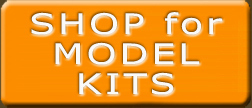A short time ago, I talked about plasticizing paper. It’s turned out to be very useful, especially for very small parts. I hope you give it a try.
Later this month Dave and I will be in Amhearst / Springfield, MA. Last year this show was very good for us. This year we get to be more involved and are giving 2 seminars on Saturday and 1 on Sunday. Kind of a tips and tricks live. I want to share more ideas about building in paper and It’s my intention to offer some useful insight every week. Some of the new railcar kits we want to offer will have more curved surfaces so we will be developing new techniques to deal with that. I have been curious about “paper casting”. It’s nothing new but applied to our hobby, it might be interesting. If folks are interested, I might also share tips for using Photoshop. As I was preparing my presentation, it occurred to me that an interesting product might be a backdrop making tool. More on that later.
One thing I have noticed is that even some of the best builders could benefit from using more layers. Here’s what I have been doing lately. My printer will not feed 100lb paper (I think the rollers are worn) so I have been gluing an extra sheet of card to the back of the printed sheet before doing any cutting. this is great for trim details. For walls you need to be sure to add thickness parts after you do any folds since the thicker paper will not fold well. My brother has had very good results using thinner paper with more layers. The thinner paper allows sharper folds. He’s been building some amazingly small critters lately using this method.
We’d like to hear your tips and tricks. What have you discovered wile building in paper.
I’m going to talk about folds and tabs in another post.
 Monday, January 10, 2011 at 10:23AM
Monday, January 10, 2011 at 10:23AM 

 Dave |
Dave |  Post a Comment |
Post a Comment | 















